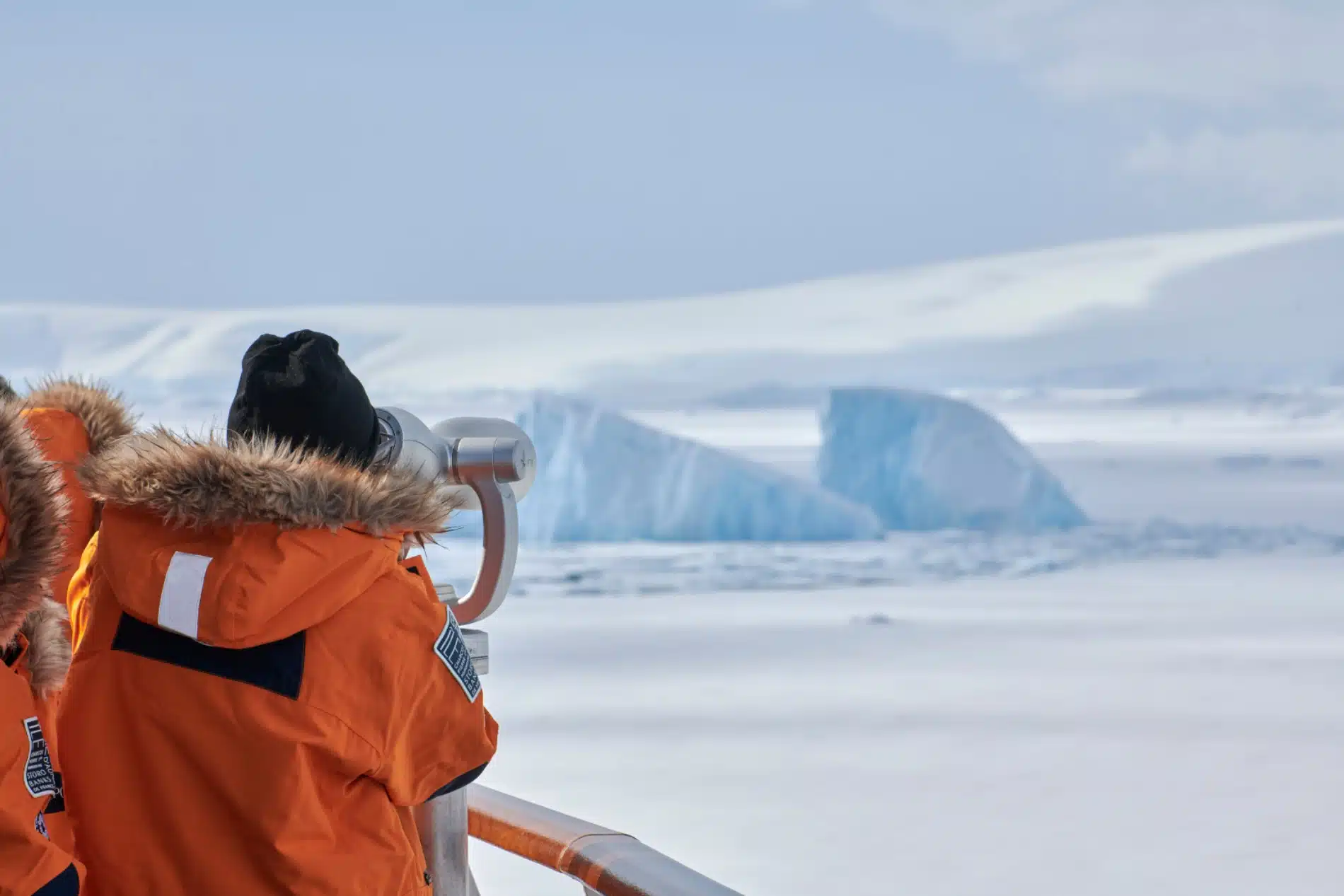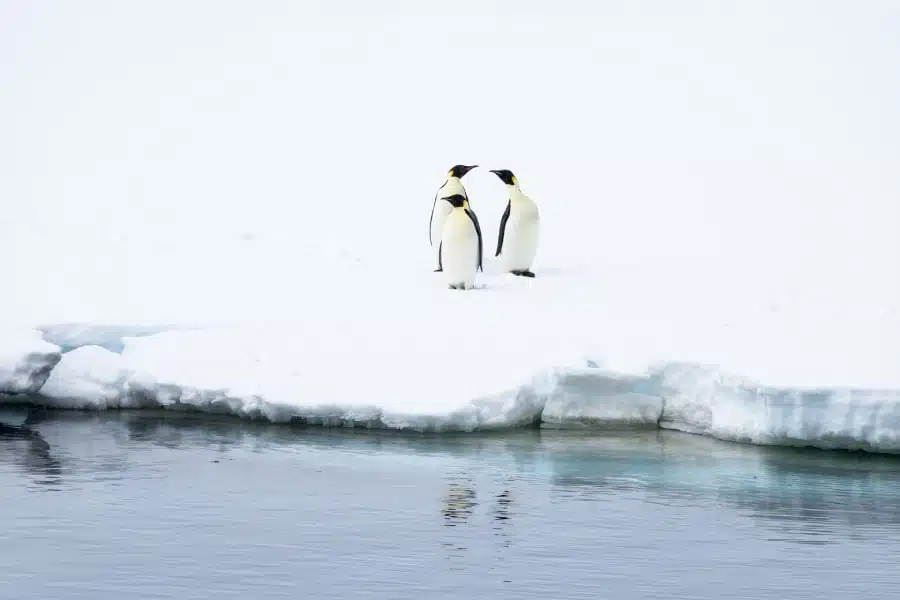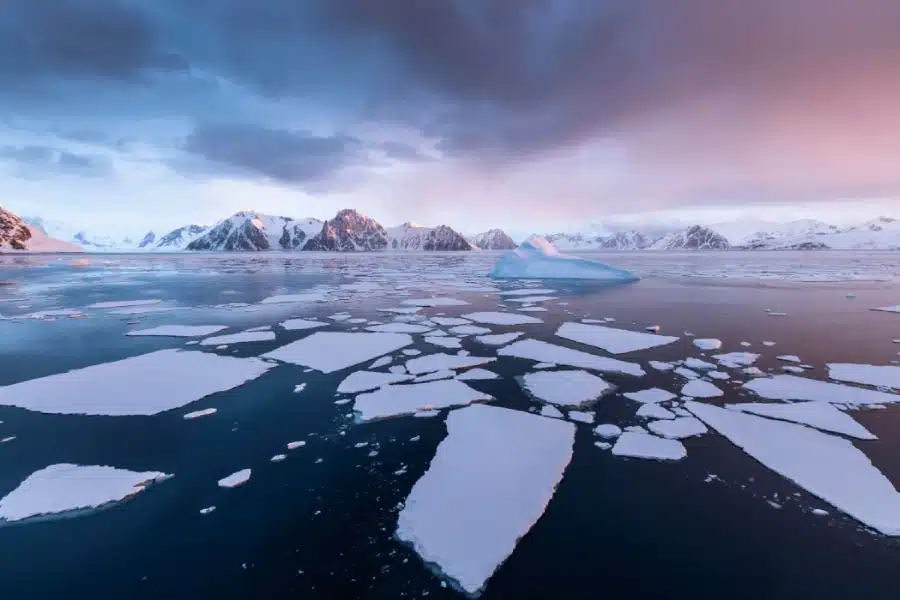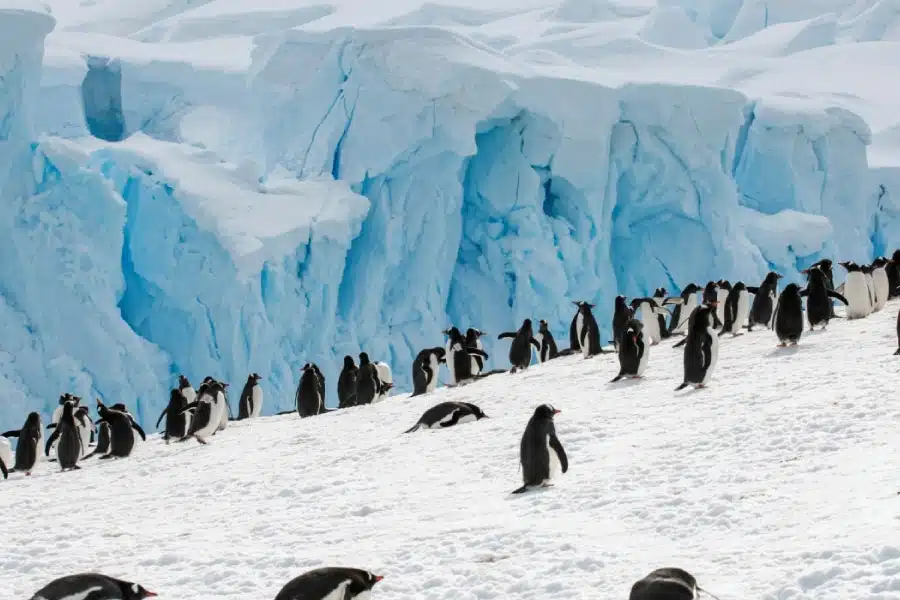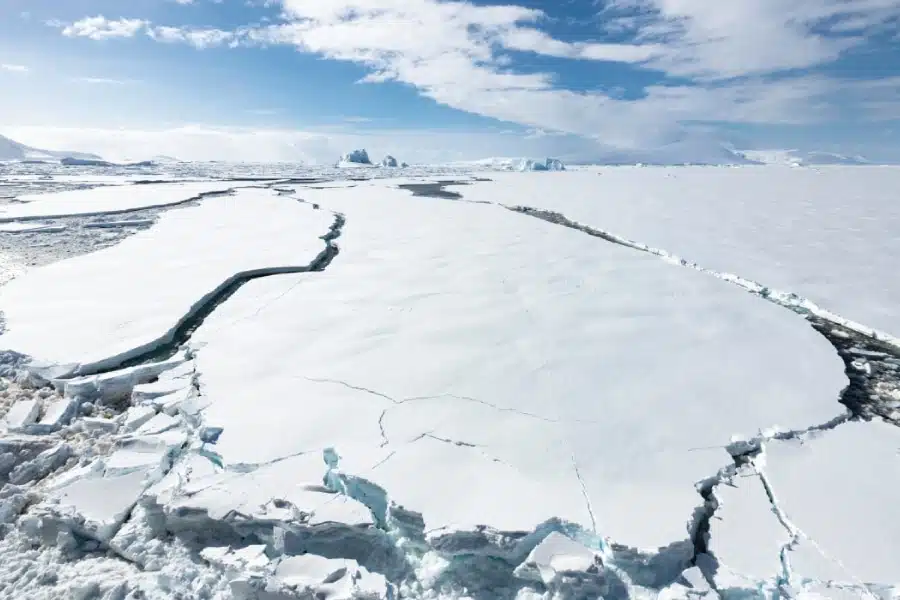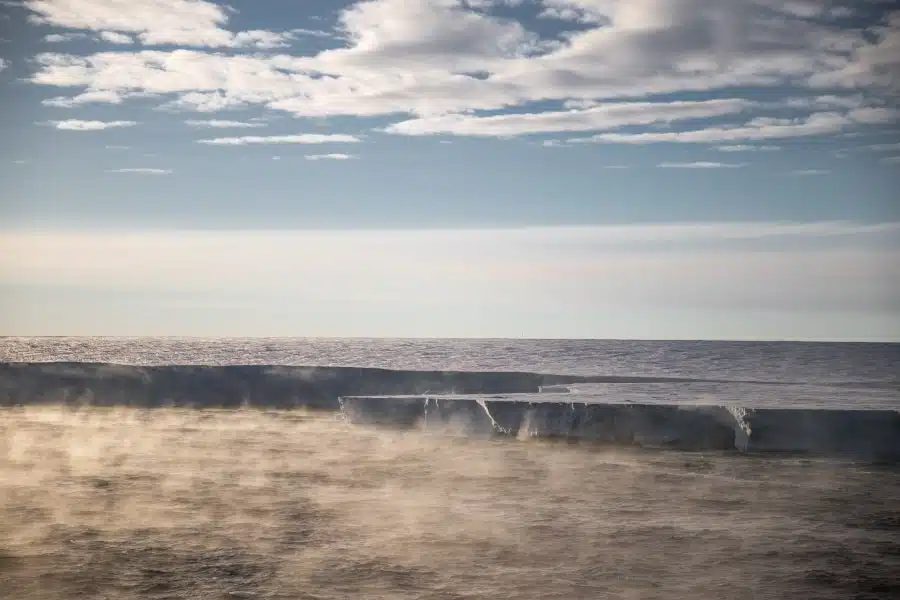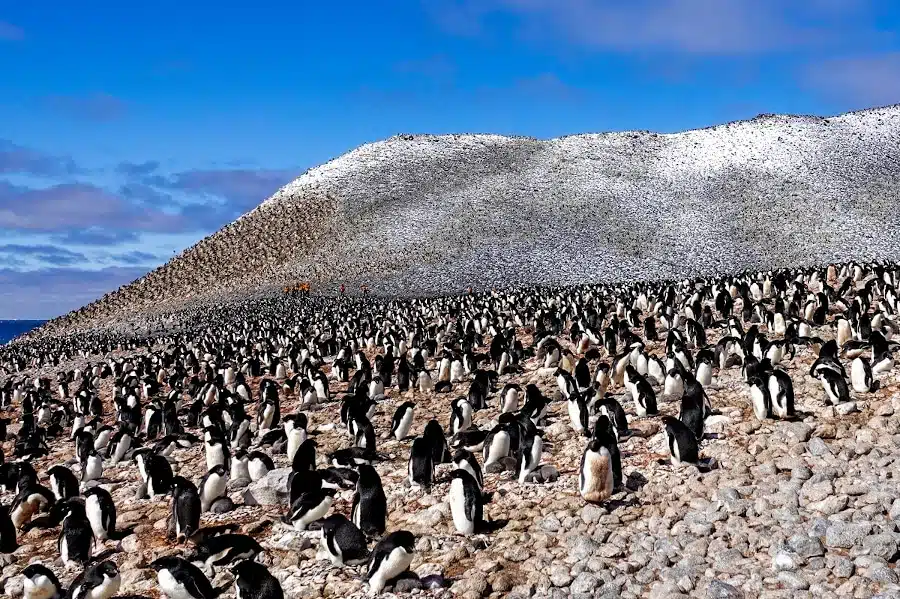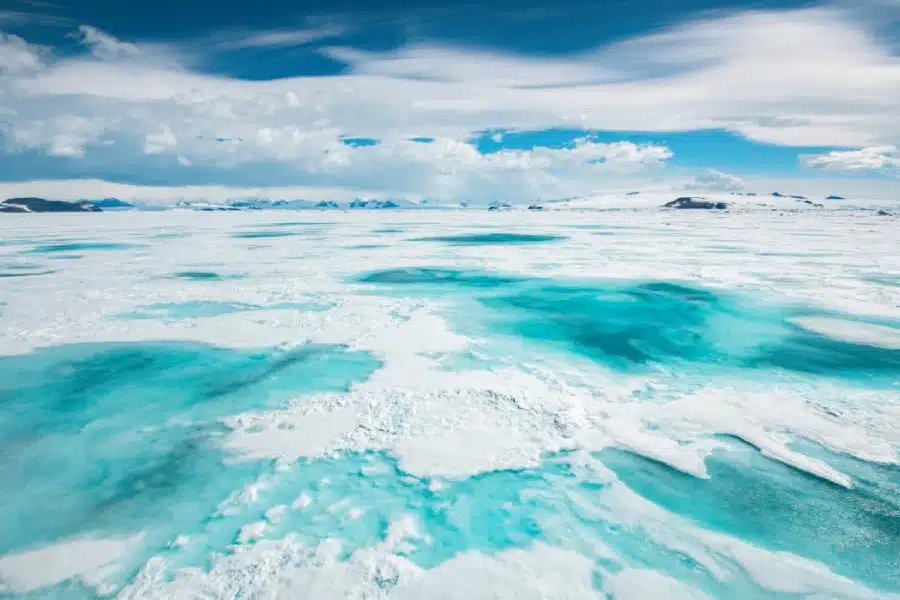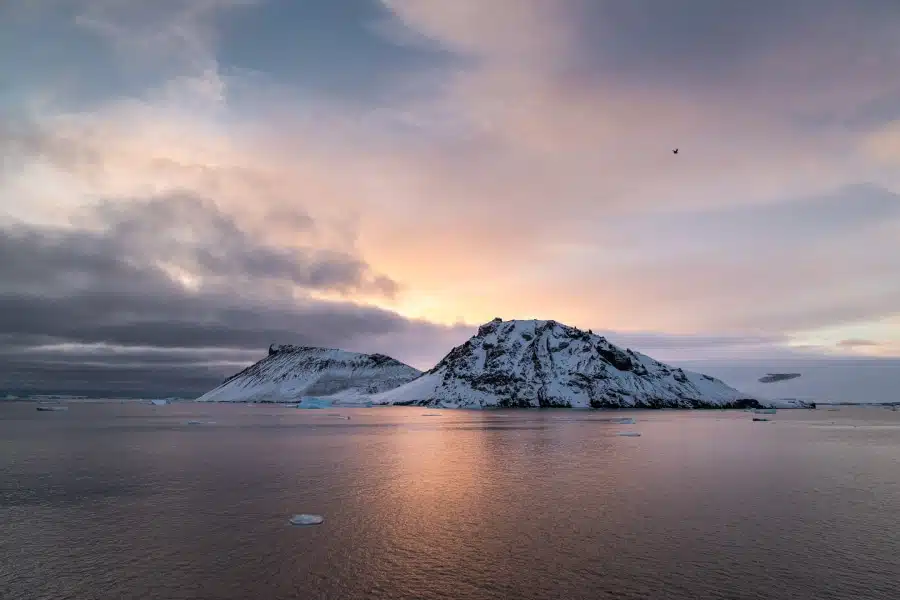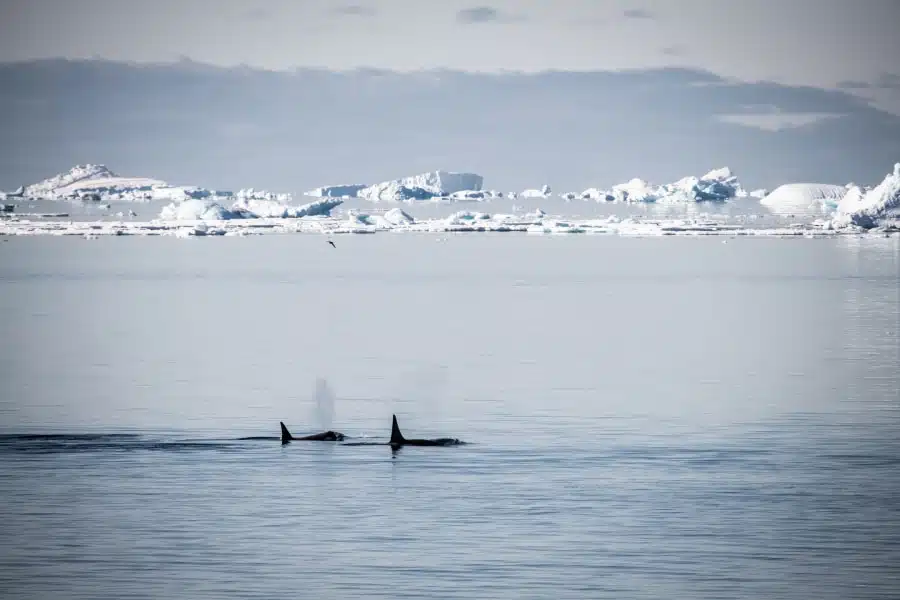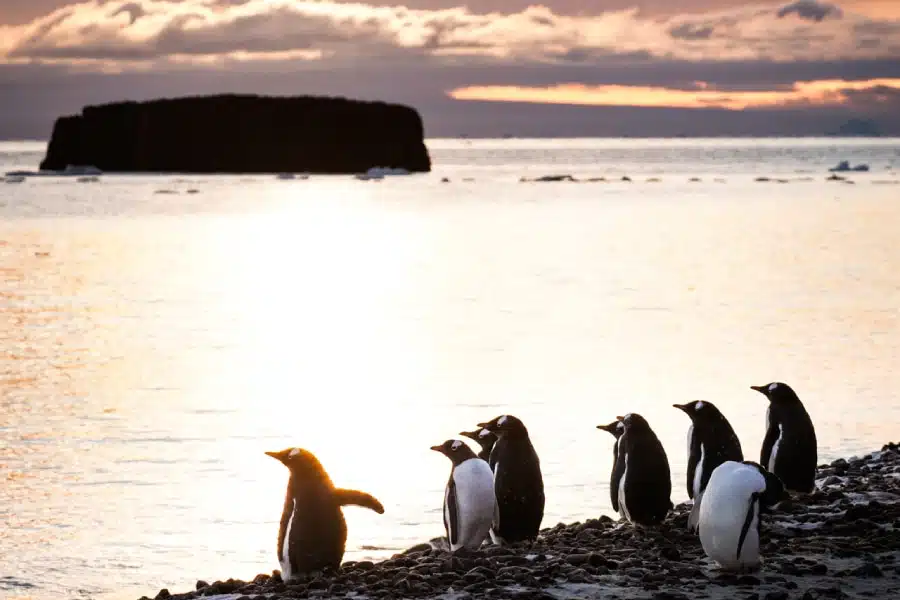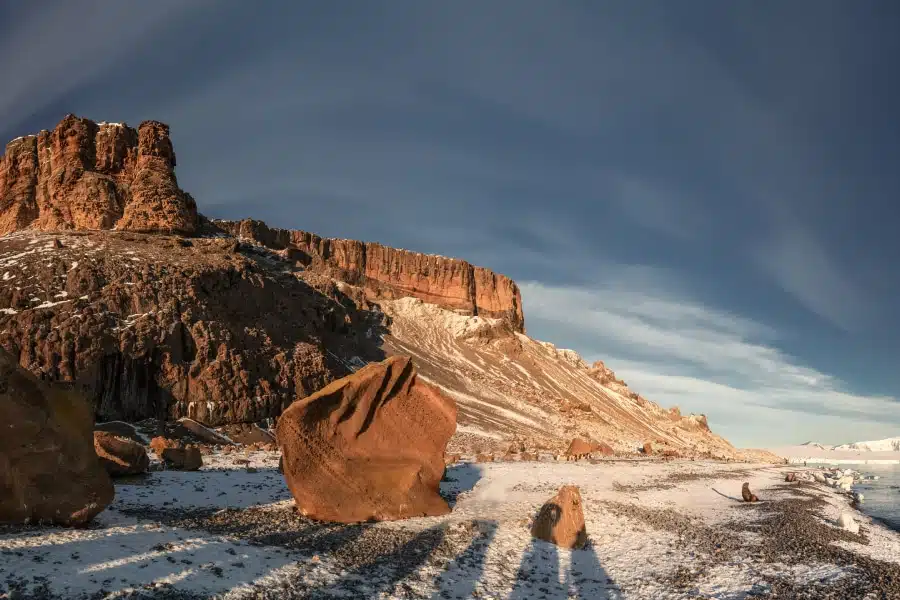Discover the southern world as seasons go by
For barely four months, Antarctica welcomes human guests in an unforgettable display of life. Each period is different but all offer a glimpse of a magical white world coming alive. Day after day, landscapes change and ships like ours are able to move further and further south, revealing some last secrets when finally, in February, autumn appears.
Visiting Antarctica at the beginning of season: drifting within the ice
Sailing in October and November, the start of the Antarctic summer, means being surprised by pristine landscapes covered by fresh snow, where nobody has tread yet. In the north of the Antarctic peninsula or the Weddell Sea, the ship sails through labyrinths of a crystalline museum, while the break-up of the sea-ice is accompanied by the migratory arrival of wildlife. During the very short nights, the sky is painted with pink light.
Crabeaters seals, Weddell seals and leopard seals are numerous. Parents protect their calves as the young ones dare to go into the water for first time. Inside the gentoo, chinstrap and Adelie penguin colonies, adults sit on their first eggs.
At this time, emperor penguins take advantage of the extended sea-ice to finish moulting.
It is also a very good time to travel to the subantarctic islands, like South Georgia, where the wildlife starts its mating season. Discovering colourful reliefs, long white or black sandy beaches, huge royal penguin colonies, rockhopper penguins, fur seals, elephant seals, albatrosses, and many other birds is a majestic introduction to the wild territories of the south.
Antarctica during the early summertime is:
- Teaming with landscapes covered by a thick pristine snow
- A unique palette of sky tones as days grow longer
- Filled with wildlife waking up after a long winter
Visiting Antarctica in the middle of the summer
December and January months represent the heart of the southern summer. The wildlife is established and busy with nesting, births, swimming, and racing for food. The Antarctic atmosphere is buzzing, the blue ocean sparkles under the sun. Temperatures reach their highest levels and elements become quieter. Penguins chicks grow, birds defend their territories, play, bicker. The seals and leopard seals take some rest, whales and orcas feed in the plankton-enriched waters. The melting snow reveals some vegetation and rocky ground. The night disappears and offers a luminous darkness in the sky, while sea-ice breaks, providing floes to the animals.
During this period expedition ships travel inside the peninsula, to sail farther south closer to the polar circle, both in the Weddell Sea and in the west peninsula areas. You will meet many drifting floes, icebergs, and wildlife.
Scientific stations are open and some of them accept visitors, like the British Port Lockroy which features a museum and a post office.
Antarctica in the middle of summertime is:
- Buzzing with wildlife
- Filled endless days, without a setting sun
- More accessible
Visiting Antarctica during autumn
With February approaching, the southern atmosphere becomes more and more peaceful. Juvenile birds are almost weaned, allowing adults to leave and feed freely in the ocean. The big chicks are moulting and preparing their first migrations to the north.
The snow reaches its minimum level and beaches are free and easy to roam. The geology and micro-vegetation of the archipelago and of the mountains are visible and add colour to the previously all-white landscape. In the north of the peninsula, the sea-ice has almost totally disappeared, but cetaceans are still numerous as they prepare to migrate.
In autumn, Antarctica opens doors to more remote and inaccessible places. If the weather conditions are good, the ship can sail farther south, looking for some new ice barriers in the Weddell Sea or beneath the polar circle. Wilder landscapes, secret places, and mysterious islands beckon, inviting guests to travel in the footsteps of the great explorers. The night is back. The fresh temperature provides a polar atmosphere which envelopes you; the first snowfall calms the excitement of the summertime.
The end of the summer is also a nice period to visit South Georgia and the subantarctic islands: young fur seals are weaned, adults are peaceful, the huge royal penguin colonies extend to the foot of rugged mountains, not yet covered by snow. March offers opportunities to observe whales.
Antarctica at the end of summer is:
- Colourful rocks and vegetation revealed
- Moulting wildlife preparing for the coming migration
- A chance to explore remoter areas free of sea-ice
Crédits photos : © Studio Ponant/O. Blaud / © Mike Louagie / © Studio Ponant/Morgane Monneret / © Studio Ponant/Laurence Fischer / © D. Buiron
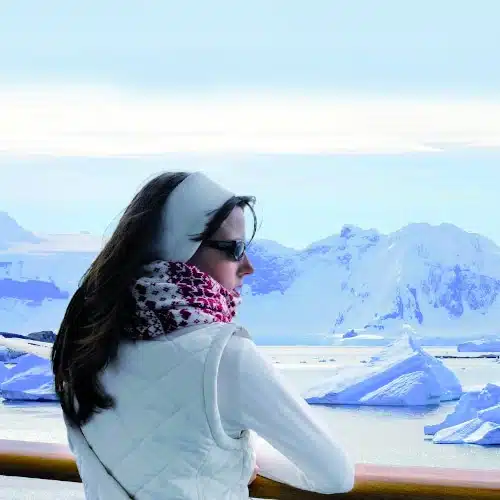
Explore all the shades of the White Continent
Embark with PONANT for an unforgettable expedition cruise

